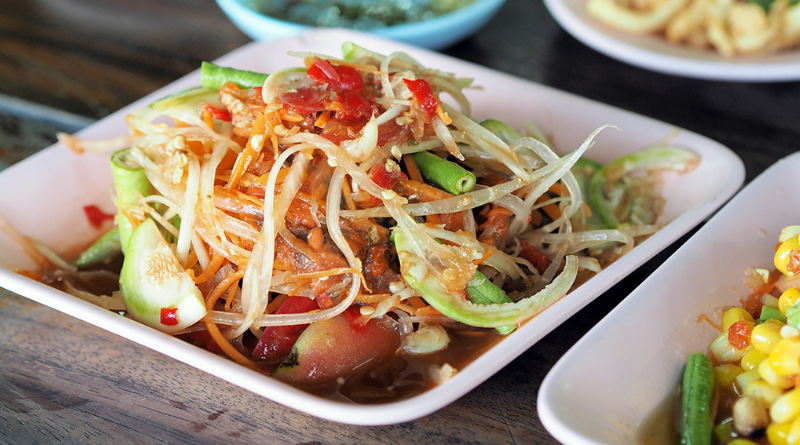Isan is unique culinary capital in ‘World’s Greatest Places’
Visiting yachts are finding there’s more to the Thailand then exploring the beautiful islands around Phuket’s Andaman seas and Koh Samui in the Gulf of Thailand, reports Asia Pacific Superyachts co-founder, Captain Charlie Dwyer, there’s Isan. Isan is now included in Time Magazine’s ‘World’s Greatest Places’ as a unique culinary capital,.
Exploring further into this exotic country some yachting visitors are traveling to Isan, the largest region in Thailand, hugging the border with Laos and Cambodia in the country’s northeast. This year Michelin-recommended restaurants expanded its Thailand guide to include Isan and its reputation of sour, spicy, herbaceous cooking style spreading far and wide, writes Nicholas Derenzo, adding “….those who venture to this off-the-beaten-path region of Thailand teeming with rice fields are rewarded with national parks and Khmer temple ruins that rival Angkor Wat”.
The food of Isaan is famous for being very spicy and pungent, seasoned with fresh herbs and fermented fish (plah rah), featuring some of Thailand’s spiciest salads. The cuisine has more in common with that of Laos then the rest of Thailand, as Isan people historically have been influenced by their neighboring county’s culture and speak a dialect that is closely related to Laos.
Captain Charlie, whose wife is from Isan, further notes, “Isan is “Thaithae” … real, authentic Thai. From the stunning rice fields and deliciously spicy food to the ever smiling people, Isan is as real as it gets. Isan does not attract tourists as the much visited Phuket and Koh Samui, but produces Real thaithae Thai.” Following covers some of famed Isan fare, which earned the culinary capital inclusion in Time’s ‘World’s Greatest Places’.
Isan Food
The food of Isaan is very hot and flavored with pungent herbs and seasonings, with some of Thailand’s spiciest salads. The intense flavors of Isaan food is one way of managing an insecure food supply – very hot, flavorful dishes encourage diners to diffuse the flavors with a lot of sticky rice.
Typical Northeast (Isan) Dishes:
Somtam, green, unripe papaya salad made in Thai or Lao-style is this region’s most famous dish
Khao niao or sticky rice is widely preferred over jasmine rice. Served in small, covered, bamboo baskets called gktratip, diners roll a small portion into a ball and eat with grilled chicken or naem, a slightly fermented sausage with a mildly sour taste
Gai Yang, chicken marinated in soy or fish sauce and spices, flattened and grilled
Pork or beef prepared naam dtok style is charred, then dressed with fresh herbs and fiery dried chilies
Naam jaew, a paste-like dip for meat made of dried chilis, tamarind, fresh shallots and shrimp paste
Laap bpet, pungent duck salad cooked with or without duck’s blood
Pla ra, pla som, and pla daek, types of fermented fish are considered the signature elements of Isan food. Pla ra is the Isan equivalent of fish sauce and is often used to season curries.
Chili pastes known as jaew are a combination of spicy chilies, garlic, salt, pla ra and lime juice
Isan people have a reputation for eating practically anything for protein including frogs, birds, snakes, and even insects! Fresh herbs like dill, basil, and mint make a bracing balance to the heat, usually from dried chilies. Mineral salts and a thicker, rustic fish sauce called pla ra – give a distinctive salty flavor and fruits like sour hog plums or tamarind add sourness. Isan food is relatively simple, employing a smaller range of spices and seasonings then the other regions of Thailand.
Warmly welcoming visitors, Isan now can proudly boats of its food earning a spot in Time’s ‘World’s Greatest Places’.





